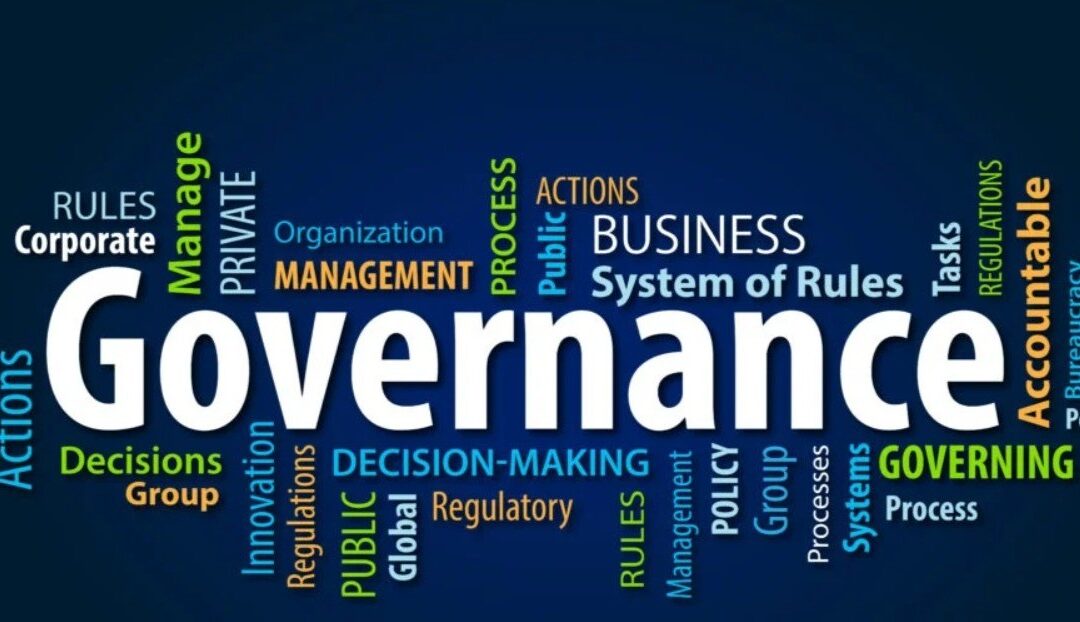Over many years, the lack of corporate governance structures has caused business closures, economic turmoil, and public consternation. Governance is a huge part of doing business, ensuring that adequate controls are upheld in running your business. No matter what size of organisation you hold, whether SME or corporate, a structure is critical for compliance, control, and risk management.
The financial crisis of 2008, notably involving Anglo Irish Bank, was significantly influenced by weak governance in Irish banks. Issues such as failure to disclose loans to directors, falsified balance sheets, and manipulation of share prices using in-house loans were all preventable with robust internal governance and risk management procedures. This underlines the importance of proactive oversight and the role of external checks in preventing such crises.
The governance scandal at RTÉ, Ireland’s national broadcaster, is a valuable case study. The revelation of undisclosed payments to a top presenter and the use of ‘barter accounts’ to conceal additional fees and perks provide essential lessons. Understanding these failures can help organizations strengthen their governance and risk management policies, avoiding similar scandals.
Failures included a lack of board oversight, inadequate audit checks, confusion over board and executive roles, and the absence of a formal risk management policy. The scandal led to the resignations of the highest-level officials, including the Director General and Board Chair.
In a 2024 survey by Auxillion, 59% of Irish businesses abandoned projects due to bad corporate governance, resulting in significant financial losses. Poor IT governance was also found to be a primary cause of failed digital transformation projects.
You may feel it may never happen to you. The consequences of poor governance and oversight last a long time, destroying the reputation of many companies. Over many years, the lack of corporate governance structures has led to business closures, economic turmoil, and public discontent. Governance is a crucial aspect of conducting business, ensuring that adequate controls are maintained in organizational operations. Regardless of the size of your organization—be it a small and medium-sized enterprise (SME) or a large corporation—a governance structure is essential for compliance, control, and risk management.
Implementing strong corporate governance in Irish SME food businesses is achievable and beneficial, supporting compliance, growth, risk management, and reputation. Here’s a practical, step-by-step approach tailored to the sector:
1. Clarify Strategy and Roles
- Document your strategy: Create a clear document outlining the company direction in a clear, understandable format that all employees can relate to.
- Define roles and responsibilities: Separate board-level oversight from day-to-day management. Even in small businesses, this helps avoid confusion and ensures accountability. Have a clear organisational chart and reporting lines to avoid any confusion.
2. Establish Board or Advisory Structures
- Hold regular board meetings: Separate strategic and operational management meetings to focus on long-term direction.
- Add independent expertise: Consider bringing in a non-executive director or forming an advisory board to provide outside perspective and challenge. This will support an unbiased, independent, experienced view.
3. Build Transparent Policies and Processes
- Develop key policies: Document and store all policies on food safety, staff conduct, sustainability, and crisis management. This will link your values to daily operations and guide decision-making.
4. Ensure Compliance with Food Law and Safety Standards
- Register and comply: Register your business with the appropriate authorities and comply with audit requirements.
- Maintain traceability: Establish transparent systems for tracing ingredients and finished products, allowing full traceability for all components.
5. Promote Accountability and Transparency
- Keep records: Document key decisions, policies, and compliance activities. This supports transparency and provides evidence in case of audits or disputes.
- Foster a culture of integrity: Encourage open communication, ethical behaviour, and a willingness to report concerns without fear of reprisal.
6. Monitor, Review, and Improve
- Regularly review governance practices: Assess your policies, board effectiveness, composition, and evaluation at least annually. Use feedback from staff, customers, and inspectors to improve.
7. Invest in Training and Development
- Ensure all staff are given the training opportunities to perform their roles to the best of their ability. Support succession planning by developing the next set of leaders across the business. Document all performance management across the business.
Start placing governance at the heart of your business to protect its integrity, stakeholders and long-term success.
If you want to speak with me about potential non-executive advisors for your SME business, contact me.
Margaret Dineen

